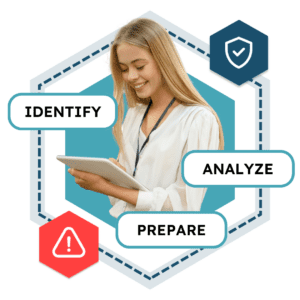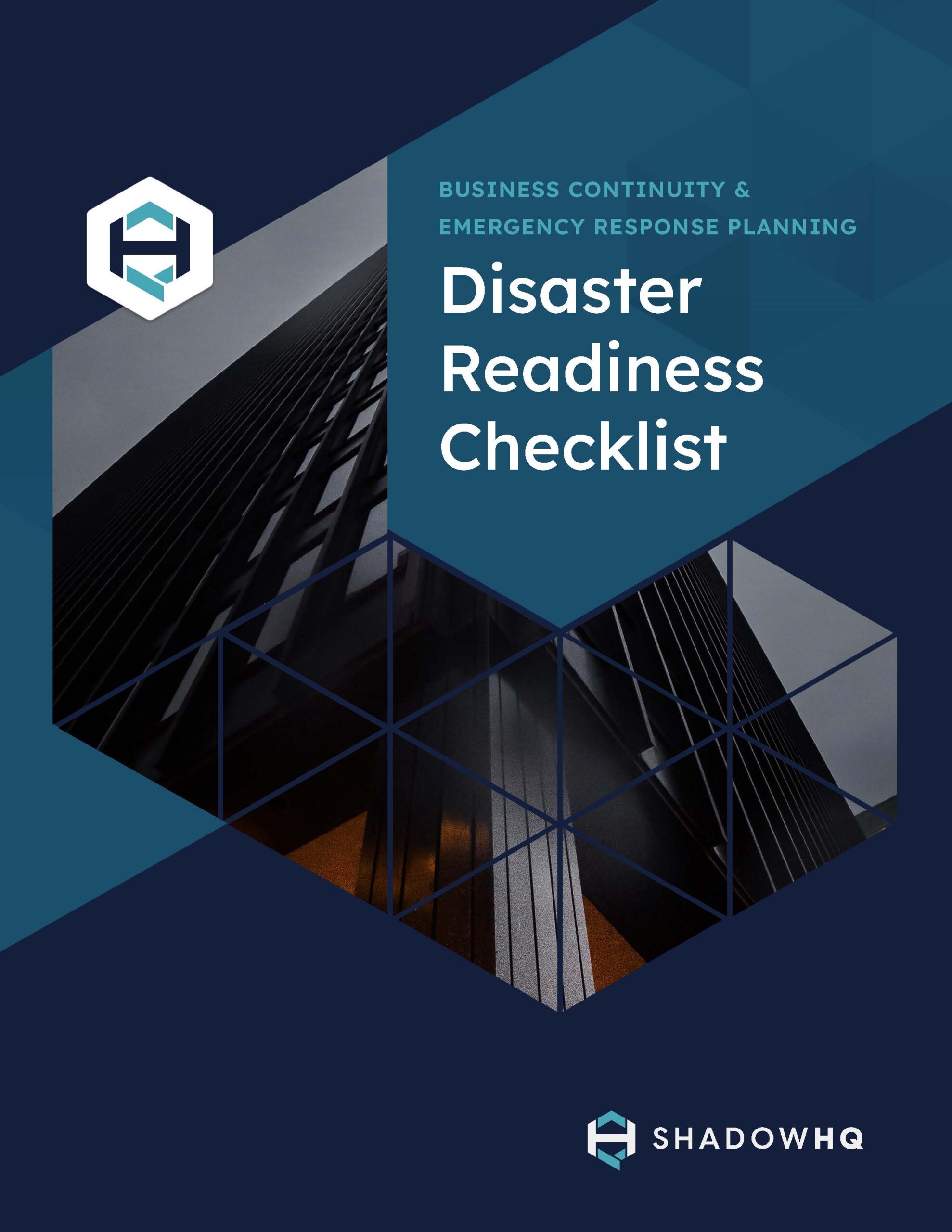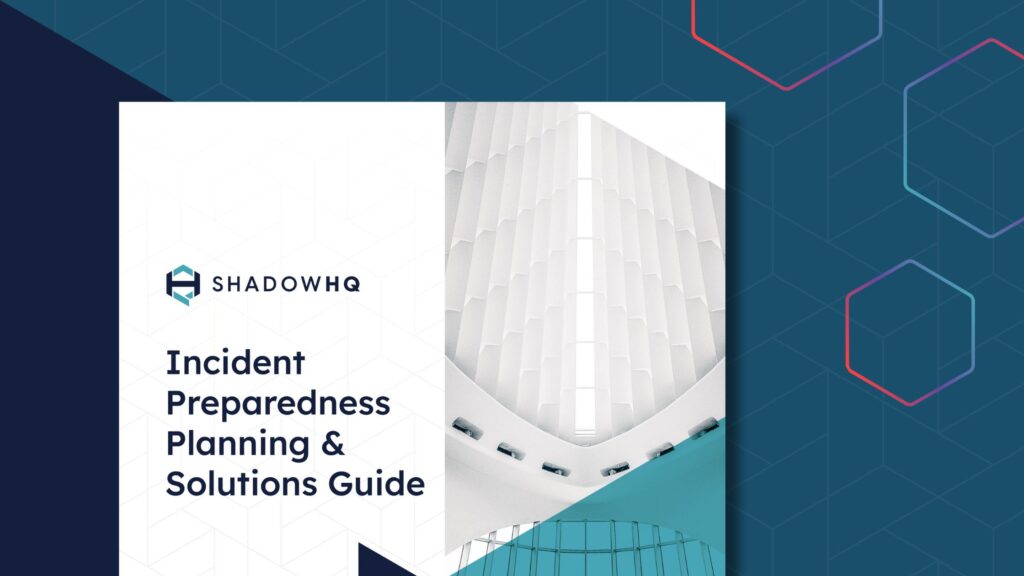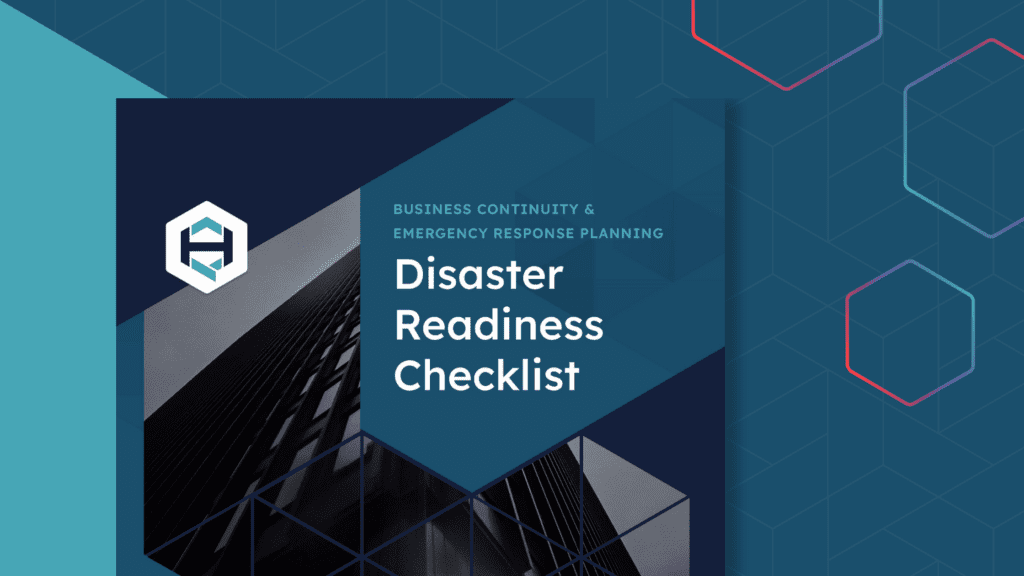10 Tips to Strengthen Your Risk Management Plan
A risk management plan is a strategic framework that identifies, analyzes, and prepares for potential risks, ensuring an organization’s or project’s stability and success. However, traditional, manual methods often lack the speed, accuracy, and efficiency required in today’s fast-paced and complex environment.
Organizations can more effectively identify and analyze risks by integrating modern technology and automated systems into the risk management process. This modernization includes adopting advanced software for real-time monitoring, data analysis, and communication.
Modernizing these processes not only improves the efficiency of incident response but also enhances the overall resilience of an organization by enabling a proactive, rather than reactive, approach to risk management. In 2023, cyber incidents and business interruption both tied for the leading risks to businesses globally, both coming in at 34%.
Integrating advanced technology and automated systems is critical in an era where traditional, manual methods fall short. So, let’s dive into ten essential tips to bolster your risk management plan through modernization.
 What exactly is a risk management plan?
What exactly is a risk management plan?
A risk management plan is a strategic approach to identify, analyze, and address potential risks in a project or organization. It involves identifying risks across various domains, analyzing their likelihood and impact, and prioritizing them.
Your plan outlines specific strategies to mitigate these risks, such as prevention measures and contingency plans. Its implementation requires coordination and resources, continually monitoring and adapting to new information or changes. Effective communication within the organization and with stakeholders is vital. This dynamic plan helps minimize potential adverse impacts, enhancing stability and success.
10 tips to strengthen your risk management
When focusing on incident preparedness and modernizing disjointed or manual incident response and crisis management processes, it’s crucial to have a robust risk management plan. So, let’s explore ten ways to strengthen and modernize your risk management processes.
1. Comprehensive Risk Assessment
Regular, thorough risk assessments are the cornerstone of an effective risk management plan. It involves identifying potential threats and vulnerabilities that could impact the organization using qualitative and quantitative methods for a more rounded evaluation.
This comprehensive approach allows for a deeper understanding of the risks, considering market trends, technological developments, and internal processes. These assessments should be conducted periodically to keep up with evolving risks and to ensure that the risk management strategies remain relevant and effective.
2. Integration of Technology
In the digital age, leveraging modern technology and software is critical to enhancing incident response processes.
Advanced tools such as incident management systems, artificial intelligence for predictive analysis, and comprehensive communication platforms can significantly improve efficiency. These technologies enable quicker identification and assessment of risks, automate routine processes, and facilitate real-time communication and decision-making.
Technology integration streamlines response efforts and provides valuable data insights, leading to more informed and effective risk management strategies.
3. Cross-Functional Teams
Forming cross-functional teams is critical for a holistic understanding and management of risks. These teams should consist of members from various departments – finance, operations, IT, human resources, and more. This diversity ensures that multiple perspectives are considered, leading to more robust risk analysis and response strategies.
You’ll foster collaboration and knowledge sharing, allowing for more comprehensive and practical risk mitigation approaches. Such teams are better equipped to handle the complexities of modern business environments, ensuring a resilient and adaptable risk management plan.
4. Continuous Training and Drills
Regular training and conducting drills are crucial for maintaining a state of preparedness. Training programs should cover current incident response procedures and emerging risks, ensuring that employees are up-to-date with the latest practices.
Drills help test the effectiveness of these procedures and identify areas for improvement. This ongoing process keeps the team ready for potential incidents and reinforces the importance of risk management within the organization. Continuous training and drills contribute to a culture of preparedness and resilience, which is essential for effective crisis management.
5. Clear Communication Protocols
Clear communication protocols are essential, especially during a crisis. Establishing and maintaining effective communication channels ensures accurate information is disseminated promptly to internal and external stakeholders. This practice includes predefined methods for reporting risks, regular updates during an incident, and post-incident debriefings.
Effective communication helps manage stakeholder expectations, coordinate response efforts, and minimize misinformation. It’s a vital component for trust and transparency in crisis management and plays a significant role in the overall effectiveness of the risk management plan.
 6. Scalable Response Plans
6. Scalable Response Plans
Scalable response plans must accommodate various types and scales of incidents. A one-size-fits-all approach is inadequate in today’s diverse risk environment. Scalable plans allow for flexibility and adaptability, enabling organizations to respond effectively to both minor issues and major crises.
This scalability ensures that resources are utilized efficiently and that the response is proportionate to the severity of the incident. Regularly reviewing and updating these plans is crucial to ensure they remain adequate and relevant.
7. Legal and Regulatory Compliance
Staying abreast of legal and regulatory requirements is crucial in risk management. Ensuring the risk management plan complies with these requirements is about legal adherence, protecting the organization’s reputation and avoiding potential financial penalties. This process involves understanding the regulatory landscape, which can vary by industry and region, and integrating these requirements into the risk management strategies. Compliance should be ongoing, with regular reviews to accommodate new laws and regulations.
8. Post-Incident Analysis
Conducting a post-incident analysis is critical for learning and improvement. After an incident, a thorough debriefing should be undertaken to evaluate the response’s effectiveness. This analysis provides insights into what worked well and what didn’t, allowing for refinement of the risk management plan.
Post-incident analysis is crucial in building a resilient and adaptive risk management approach. It is an opportunity for continuous improvement, ensuring that lessons learned are integrated into future response strategies.
9. Stakeholder Involvement
Involving stakeholders in planning is vital for a comprehensive risk management plan. Stakeholders can offer valuable insights and perspectives, enhancing the plan’s effectiveness. Their involvement ensures that their concerns and expectations are considered, leading to greater buy-in and support for the risk management initiatives.
This collaborative approach can also identify potential blind spots and provide diverse viewpoints, contributing to a more robust and inclusive risk management strategy.
10. Resource Allocation
Ensuring adequate resource allocation for incident response is essential. This program includes not just financial resources but also human and technological resources. An effective risk management plan must have the tools, personnel, and funding to respond to incidents effectively, including having a contingency fund for unexpected crises.
Adequate resource allocation ensures that the organization is not just prepared to handle risks but also equipped to recover swiftly from incidents. It’s a critical aspect of maintaining operational continuity and organizational resilience.
Stronger risk management is business critical
Each of the above steps plays a vital role in ensuring that your risk management plan is robust, efficient, and effective in dealing with incidents. It’s crucial to continuously evolve and adapt your plan based on new threats, technological advancements, and lessons learned from past incidents.
A robust risk management plan is more than just a precaution; it’s a strategic necessity in today’s complex landscape. By embracing technology and automating processes, organizations can ensure more efficient, accurate, and timely responses to potential crises.
It’s clear that integrating modern methodologies into risk management isn’t just beneficial — it’s essential for resilience and success in an ever-changing world.
ShadowHQ is an industry leader in cloud-based, out-of-band communications to bolster business continuity and disaster recovery programs. We keep your teams in touch so they can focus on an effective incident response. Want to learn more? Book a demo with our experts today to discover how we can help.
EWEBINAR
Experience the ShadowHQ platform
Walk through a cyber breach scenario in a 15 minute demo.

GUIDE DOWNLOAD
Disaster Readiness Checklist
When an emergency happens, every minute counts.


